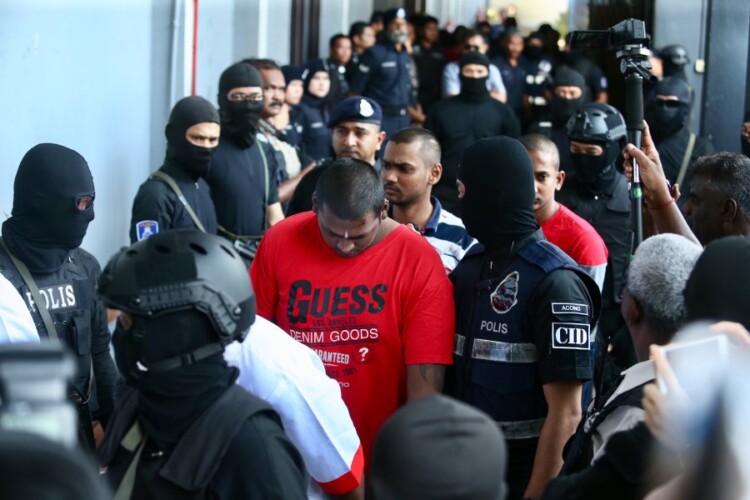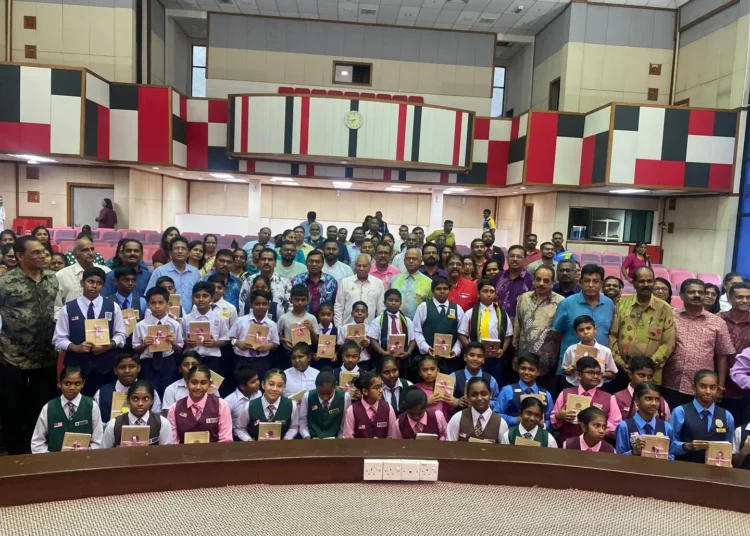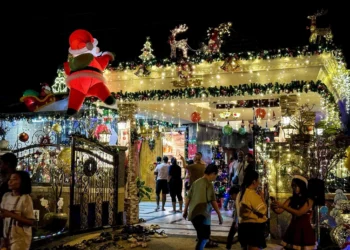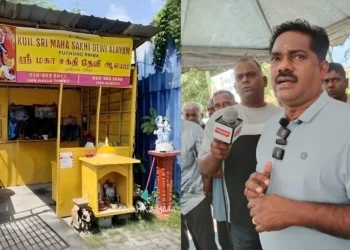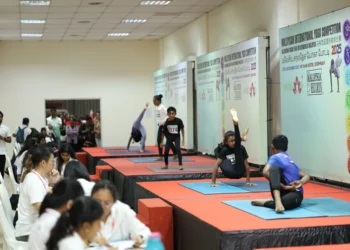Are you a gangster or part of a mafia network? Have you been involved in any gangsterism incidents such as theft, rape, murder, burglary, and even drug dealings?
Literally, Malaysian Indians have been defined as gangsters by other races in the country after incidents of gangsterism involved Indians became infamous in the 1980s.
Gangsterism, like politics, is a career progression that requires no school education or qualifications. High poverty rates amongst the lower income Indians have lured many into gangsterism just for survival sake. ‘You’ve got nothing to lose because you’ve got nothing.’ That’s a reflection of Malaysia’s downtrodden Indians.
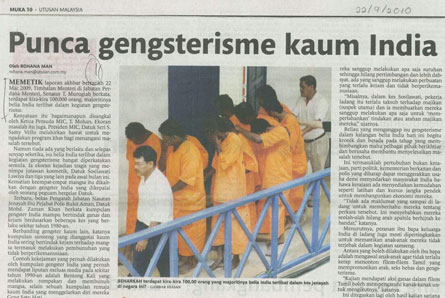
How and when did gangsterism among the Indian community start?
Nayagan is classified as an Indian crime film helmed by Maniratnam, starring Kamal Hassan. Nayagan was featured in Time Magazine’s 100 All Time-Best Film Ranking and Top 20 Most Great Indian Film List.
The plot was loosely based on the life of a former Mumbai underworld don from the ’60s to the ’80s, Varadarajan Mudaliar (Vardhabhai). By bootlegging, he began his criminal life and ventured into contract killing, piracy, and cocaine. The famous dialogue from the film Nayagan is:
“Are you good or bad? (Neenga Nallavara Illa Kettavara) and
“I don’t know” Velu’s reaction (Theriyallieppa).
Vardhabhai reflects 71% of Malaysian gangsters who are largely Indians. The Indian gangsters, deprived of schooling and economic opportunities, were forced into criminal life.
On this wide scale, an iconic movie would have a significant effect on the world. For many poverty-stricken young people, the film may encourage them to change their fate in life. In this case, I would rather die catching a bullet than starvation would be the apt line to represent the thinking process of the Indian gangsters.
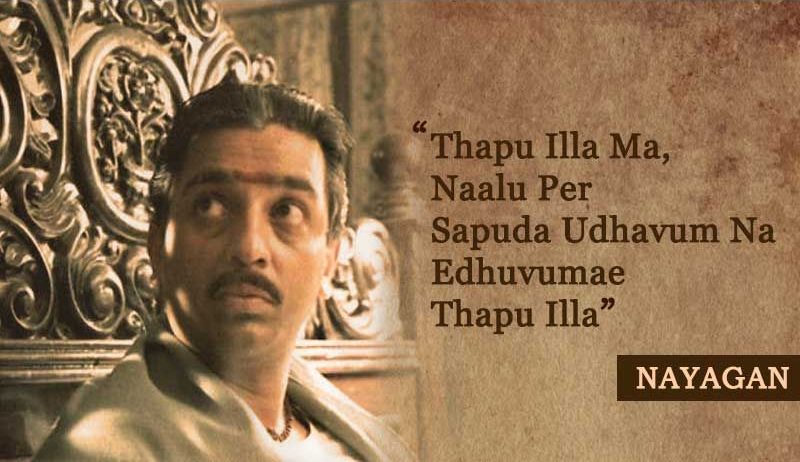
Vardhabhai’s tale however continues in the real life aspect of those involved in gangsterism. If not pondered and tackled upon carefully, the country will see more Vardhabhais instead of Ananda Krishnan or Tony Fernandes. There are plenty of ways that can be done to fix the Indian issues but it requires constant initiative from Indian parties.
Its the 21st century, and a significant high of the Indian community in the country is still living in exile. Rich Indians will continue to thrive and so will their future generations while the poor ones would continue living in absolute bondage should there be no proactive measures taken by the government and communities at hand to lower the rate of Indians involved in gangsterism in Malaysia.
Not to forget half of the poor Indians who are living in rural areas will continue to drink cheap liquor as well.
Bukit Aman Secret Societies, Gambling and Vice Division (D7) SAC Principal Assistant Director Rohaimi Md Isa told China Press that Malaysia currently has 105 secret societies with 576 branches and 9,042 active members.
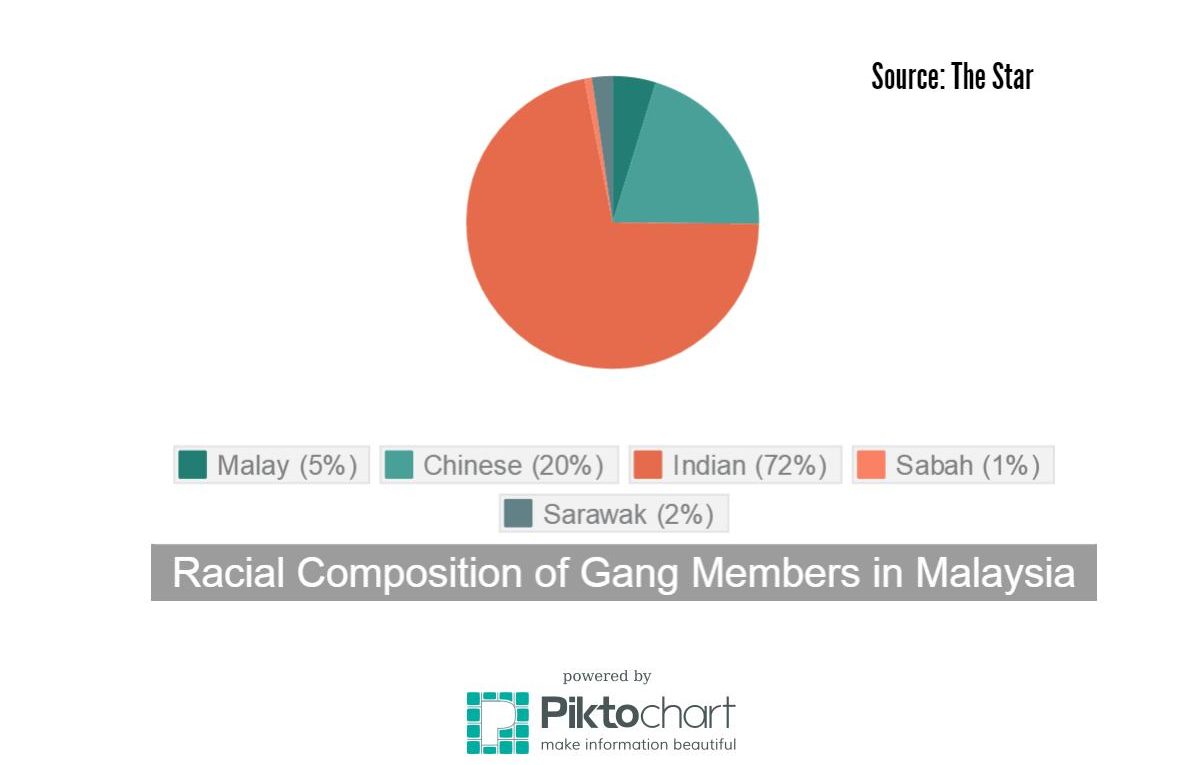
Indians, who make up just 7% of the population have 18 secret gangs, a total number of 267 branches, and 4,143 active members account for around two million of the population.
On the other hand, Indian gang members are rarely form splinter groups, unlike the Chinese, which explains why their gangs are long formed and have the most loyal members.
Death in custody an infamous term involving Indians such as the likes of the unfortunate Balamurugan, P Karuna Nithi and N Dharmendran, who made the headlines when they died before facing trial has been a question human rights groups, activists and politicians have been trying to get an answer for years now, and the battle to give justice to those that died in police custody and their families is an ongoing one till date.

The official statistics state that Indians account for 23.4% of custodial deaths. That is almost a fifth of the official police custody deaths. During a parliamentary discussion, the overall statistics issued by the Home Ministry were 257 deaths in police custody between 2002 and 2016.
There was also a feeling of unity in being a member of a bigger group. There was one Indian teenager who mentioned that “It was great to have a group of brothers looking out for each other.”
Bukit Aman CID Director Datuk Hadi Ho Abdullah said that in 2013 there were about 40,000 alleged gang members out there, 28 million were Indians. The majority of gangs were made up of Chinese and Malays (25 % and 4.77 % respectively). According to the Al Jazeera documentary (2014), it stated that nearly 70% of gang members and felons in Malaysia were Indians.

We can continue saying that it’s their flaw for perpetrating wrongdoing and every one of them should be rebuffed yet eventually, does that tackle the issue over the long haul?
Follow us on Instagram, Facebook or Telegram for more updates and breaking news.


